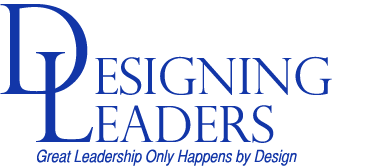Book Review: The 2020 Workplace
I first read Jeanne Meister’s and Karie Willyerd’s The 2020 Workplace back in 2010, and I found it to be a very useful and engaging book that added a lot to a course I was teaching at the time. A student had recommended it as a good discussion of generational diversity, but as I went on I found it to be much more than that. Nearly 5 years later, it’s worth revisiting it as we get closer and closer to the date in the title.
This is a good “discussion book” in that it raises a number of points that each start a good discussion with someone. For example, one of the earliest issues is the suggestion that we will soon enter a (short) period where 5 generations can exist in the same workplace: Traditionalists, Baby Boomers, Gen X, Millennials, and Generation 2020 (or whatever the end up being labeled). While this might not be the case in many workplaces, the facts of longer lifespans, decreasing financial stability for retirement, the increase in knowledge-based over physical work, and the ability to work beyond the traditional office environment, all are leading us to a period of at least 4 generations commonly working together. In Asia, as we see retirement ages being reset higher and more and more of the oldest generation staying in the workforce in some capacity, this may not be too much of a surprise. Other issues in the book, such as the increasing female proportion of the workforce, our evolving understanding of diversity, and a restructuring of the traditional hierarchies, all provide great jumping off points for readers who want to explore further in discussions with their friends and peers.
The authors aren’t making value judgments here. There is no argument that “the Millennials are coming so you Boomers need to change to satisfy them.” Instead, they are making observations of historical evolution and current realities, offering trend-based predictions of what may be coming, and providing recommendations for how leaders can best approach the mix of people in their workforce. If that means Boomers may need to adjust their expectations, and also mentor their incoming workers to adjust their expectations, then so be it. Obviously, readers can choose whether to do that or not.
The book is grounded in data, including two quantitative global surveys and a significant number of qualitative case studies. Despite this, it is not a “theoretical” book, nor is it filled with academic jargon. It is an easy read and flows pretty smoothly. Some of the more useful elements include chapter summaries and lists of social media terms and modern web resources. While these lists can become outdated pretty quickly (like, as soon as the book is printed) they can be useful for those who still don’t understand what LinkedIn is (laugh if you want, but I had Boomers in a workplace only a couple years ago who still printed out each email they got because they didn’t trust computers; these are the folks who can use what many of us consider to be basic education).
This is a useful book not only for current leaders but even more so for those who aspire to be leaders in a potentially confusing cross-cultural and cross-generational workforce. Since so much of today’s knowledge-based work depends upon one’s perspective, it is important for leaders to understand the views and perceptions that exist in their workforce and find a way to put all of them to the best use together. You might not accept every premise the authors put forth, but the book does get you thinking. No book can provide an accurate laundry list of what people believe, and nobody is completely defined by their generational cohort or ethnic background. Still, The 2020 Workplace offers you a great opportunity to start understanding the questions you need to ask to make your employees the best they can be.
- Posted by
 Dr William Thomas
Dr William Thomas - Posted in Book Reviews
 Dec, 10, 2014
Dec, 10, 2014 Comments Off on Book Review: The 2020 Workplace
Comments Off on Book Review: The 2020 Workplace
Categories
- Book Reviews
- Change
- Communication
- COVID-19
- Creativity & Innovation
- Culture
- Diversity & Inclusion
- Employee Development
- Ethics
- Free Agents
- Health and Balance
- Leader Development
- Leading
- Management
- New Leaders
- Planning
- Recruiting and Retention
- Uncategorized
Archives
- August 2020
- July 2020
- June 2020
- October 2019
- September 2019
- August 2019
- July 2019
- June 2019
- May 2019
- March 2019
- February 2019
- January 2019
- December 2018
- November 2018
- October 2018
- September 2018
- August 2018
- July 2018
- June 2018
- May 2018
- April 2018
- March 2018
- February 2018
- January 2018
- December 2017
- November 2017
- October 2017
- September 2017
- August 2017
- July 2017
- June 2017
- May 2017
- April 2017
- March 2017
- February 2017
- January 2017
- December 2016
- November 2016
- October 2016
- September 2016
- August 2016
- July 2016
- June 2016
- May 2016
- April 2016
- March 2016
- February 2016
- January 2016
- December 2015
- November 2015
- October 2015
- September 2015
- August 2015
- July 2015
- June 2015
- May 2015
- April 2015
- March 2015
- February 2015
- January 2015
- December 2014
- November 2014
- October 2014


 Dec, 10, 2014
Dec, 10, 2014